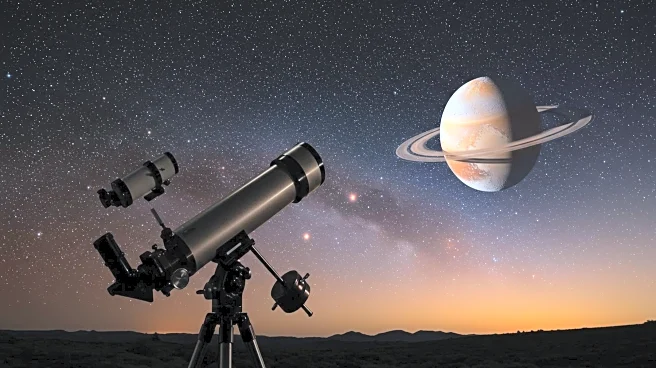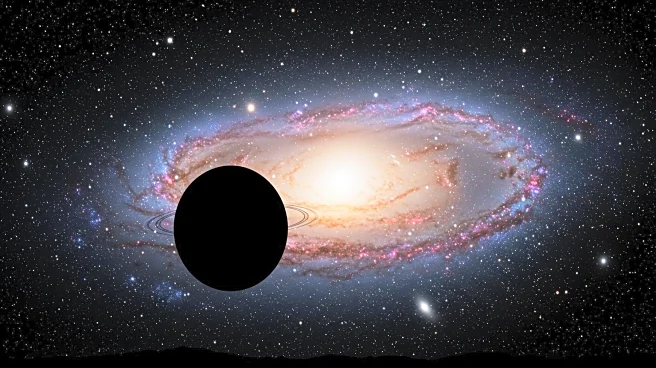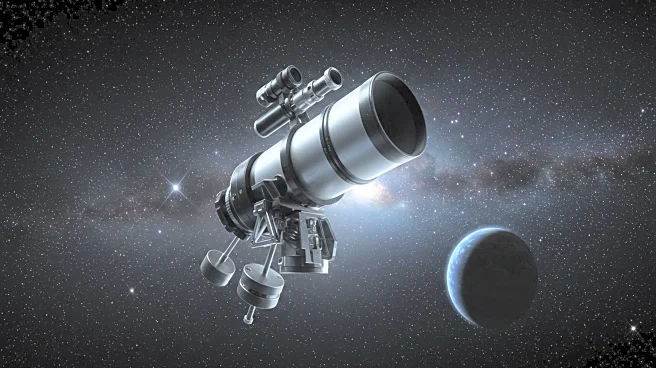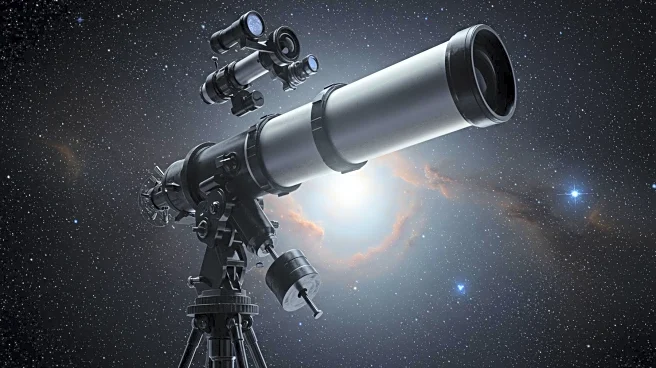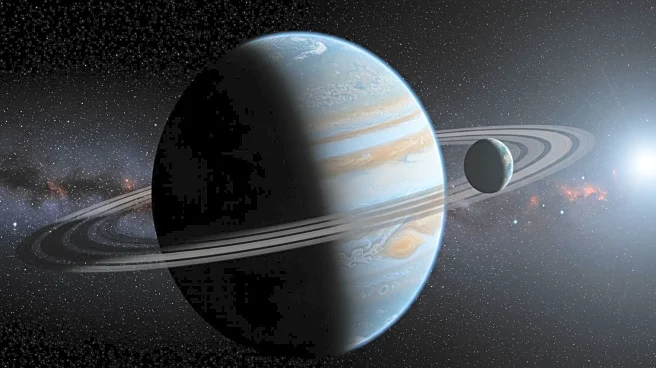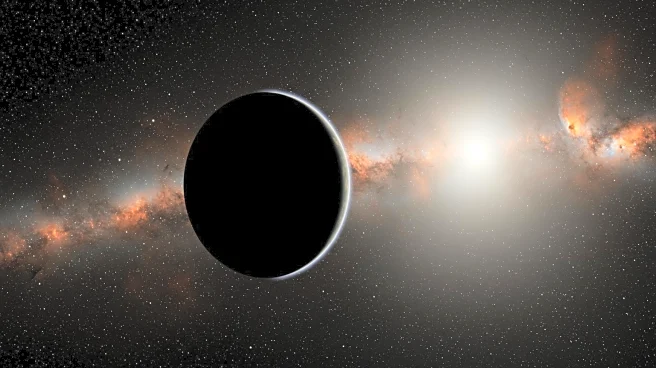What's Happening?
Astronomers utilizing the James Webb Space Telescope (JWST) have made two significant discoveries: evidence of a potential Saturn-sized planet orbiting Alpha Centauri A and a unique climate system on Pluto. The Alpha Centauri findings, detailed in The Astrophysical Journal Letters, suggest a gas giant located about two astronomical units from Alpha Centauri A, detected using JWST's Mid-Infrared Instrument (MIRI). This object is over 10,000 times fainter than its host star, indicating it could be a gas giant similar to Saturn. Observing Alpha Centauri is challenging due to its bright, closely positioned stars, but a custom coronagraphic sequence allowed the detection. However, follow-up observations did not reveal the object, suggesting it may have moved too close to the star. Separately, JWST discovered that Pluto's climate is driven by a high-altitude haze, not its thin atmosphere. This haze acts as a planetary thermostat, absorbing sunlight and radiating infrared energy, keeping Pluto's upper atmosphere extremely cold.
Why It's Important?
These discoveries have significant implications for understanding planetary systems and atmospheres. The potential Saturn-sized planet in Alpha Centauri, if confirmed, would be the closest directly imaged exoplanet to its star, offering insights into planet formation and characteristics in habitable zones. Pluto's haze-driven climate system challenges existing atmospheric models, suggesting similar systems may exist on other celestial bodies like Triton and Titan. This could influence how scientists interpret exoplanet atmospheres and assess habitability. The findings also provide insights into early Earth conditions, potentially aiding the understanding of life's origins.
What's Next?
If the Alpha Centauri planet is confirmed, it will serve as a benchmark for future studies, including observations by the upcoming Nancy Grace Roman Space Telescope. Pluto's haze climate could lead to revised atmospheric models, impacting assessments of habitability on other worlds. Continued observations and simulations will be crucial in confirming the planet's existence and understanding Pluto's atmospheric dynamics.
Beyond the Headlines
The discoveries highlight JWST's versatility in imaging faint exoplanet candidates and detecting delicate thermal signatures in distant atmospheres. These breakthroughs could lead to a deeper understanding of atmospheric physics and the potential for life on other planets, influencing future space exploration and research.
